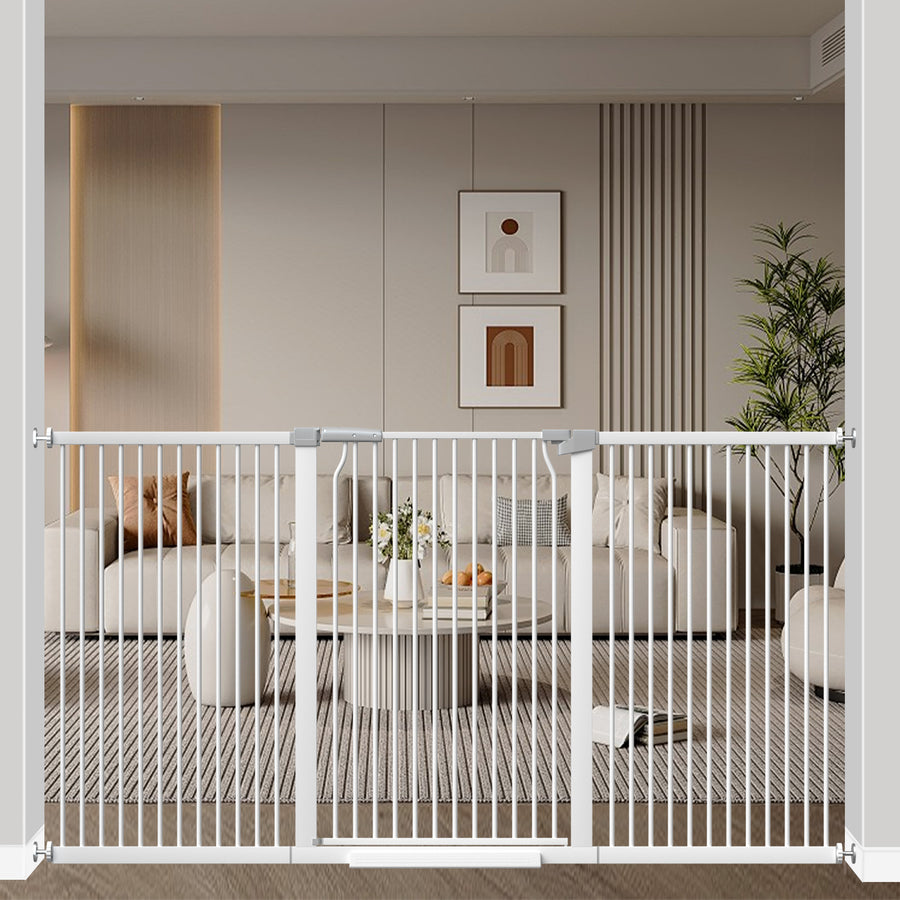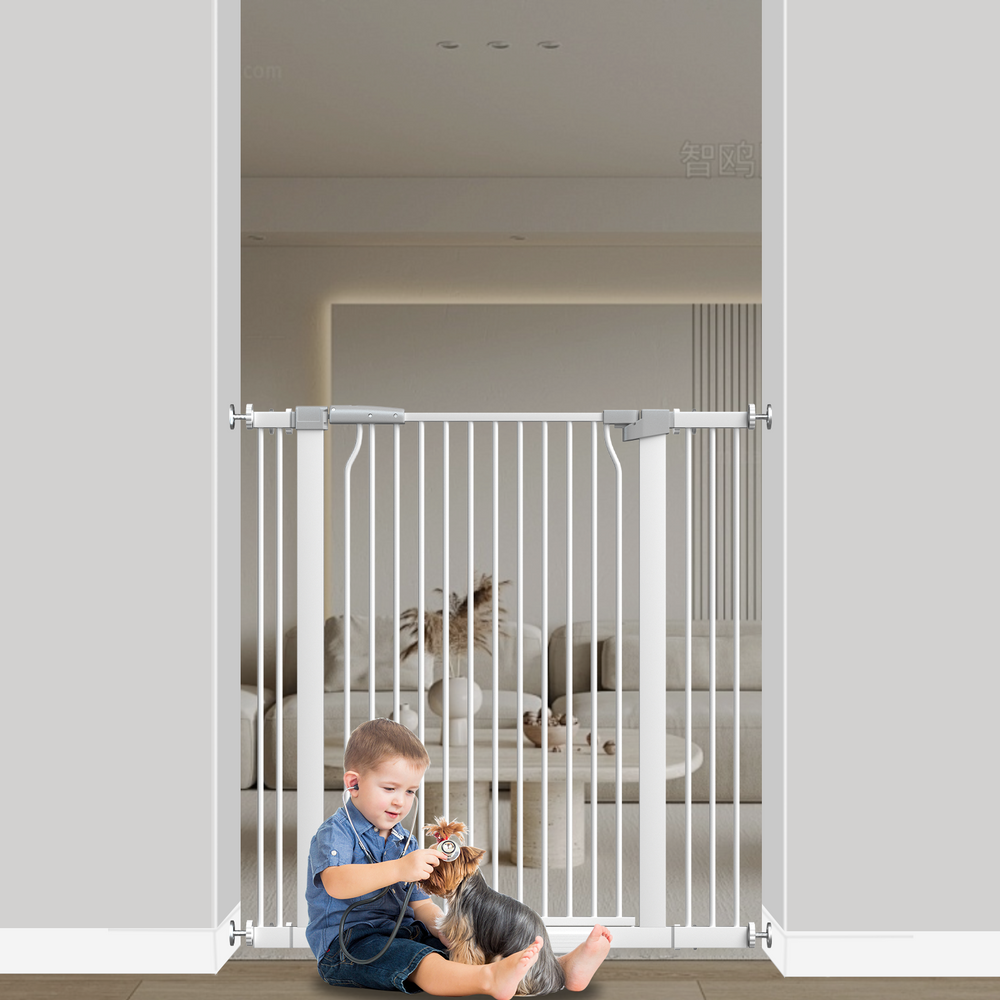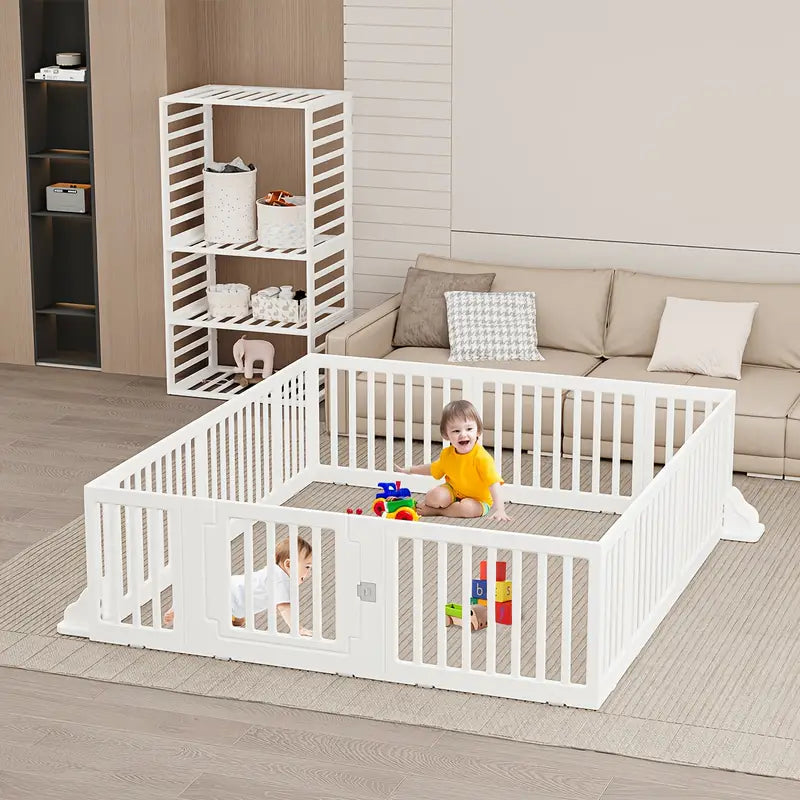Essential Emergency Preparedness for Families with Infants: A Comprehensive Guide
Creating A Family Emergency Plan

It's easy to think that emergencies are something that happen to other people, but the truth is, they can happen to anyone, anytime. That's why having a solid family emergency plan is so important, especially when you have little ones to think about. A well-thought-out plan can make all the difference in how smoothly things go when the unexpected happens.
Communication Is Key
Start by talking with your family about different kinds of emergencies – power outages, storms, or even something like a house fire. Make sure everyone understands what could happen and why it's important to be prepared. It's not about scaring them, but about making sure they know what to do. Discuss possible scenarios and how you'd react as a family. This includes where to meet if you're separated. Designate a meeting point both inside and outside your home. This could be a specific room, a neighbor's house, or a landmark nearby.
Emergency Contact Information
Compile a list of important phone numbers – family, friends, doctors, and the local emergency services. Keep this list somewhere everyone can easily find it. Think about putting it on the fridge, in your phones, and maybe even laminated in your emergency kit. Don't just rely on your phone; what if it's dead? Make sure everyone knows who to call and how to reach them. It's also a good idea to have an out-of-state contact that everyone can check in with. This person can serve as a central point of contact if local communication lines are down. Having readily available emergency contact information is a simple step that can significantly improve your family's ability to communicate during a crisis.
Regular Maintenance
Your emergency plan isn't a one-and-done thing. You need to review it regularly – at least twice a year. Check your emergency kit to make sure nothing is expired or missing. Talk to your family about the plan again, just to refresh everyone's memory. Things change, so your plan should too. Maybe you've moved, or your kids are older now. Update your plan to reflect those changes. Make sure to check expiration dates on food, water, and medications in your emergency preparedness kit. Replace items as needed to ensure everything is in working order.
Think of your emergency plan as a living document. It's not something you create once and then forget about. It's something you constantly update and refine to make sure it's always relevant and effective. It's about peace of mind, knowing you've done what you can to protect your family.
Assembling An Emergency Kit
Okay, so now we're talking about putting together an emergency kit. This is super important, especially when you have little ones. You want to make sure you have everything you need to keep them safe and comfortable if something unexpected happens. It might seem like a lot of work, but trust me, it's worth it for the peace of mind.
Essentials For Survival
Let's start with the basics. You need enough supplies to last at least three days. Think about what you use every day and what you'd need if you couldn't just run to the store. Here's a quick list to get you started:
- Non-perishable food: Canned goods, granola bars, dried fruit – things that won't spoil easily.
- Bottled water: At least one gallon per person per day.
- First-aid kit: Bandages, antiseptic wipes, pain relievers, any prescription meds you need. Don't forget the basic first aid supplies!
- Flashlight and extra batteries: Headlamps are great too, because they leave your hands free.
- Manual can opener: Because you can't eat those canned goods without one!
- Personal hygiene items: Soap, toothpaste, toothbrush, toilet paper, wet wipes.
- Copies of important documents: ID, insurance cards, birth certificates – keep them in a waterproof bag.
- Cash: Small bills and coins, because you never know when the power will be out and credit cards won't work.
Tailoring Your Kit
Now, let's get specific. Every family is different, so your emergency kit should reflect your unique needs. Think about any medical conditions, dietary restrictions, or other special circumstances that might require extra supplies.
- Infants: Formula, diapers, wipes, diaper rash cream, bottles, pacifiers, baby food. Seriously, pack extra diapers. You'll thank me later.
- Elderly family members: Medications, mobility aids, hearing aid batteries, any other assistive devices.
- People with disabilities: Extra supplies for any specific needs, like communication devices or specialized equipment.
Including Infant-Specific Items
Okay, let's really focus on the little ones. Babies have very specific needs, and you want to be prepared for anything. Here's a more detailed list of infant-specific items to include in your emergency kit:
- Formula: If you're not breastfeeding, pack plenty of formula. Ready-to-feed formula is the easiest option, since you don't need to mix it with water.
- Diapers: As I said before, pack a ton of diapers. More than you think you'll need. Trust me.
- Wipes: For diaper changes, cleaning up messes, and general hygiene.
- Diaper rash cream: To prevent and treat diaper rash.
- Bottles and nipples: If you're bottle-feeding, pack extra bottles and nipples.
- Baby food: If your baby is eating solids, pack jars or pouches of baby food.
- Pacifiers: If your baby uses a pacifier, pack several. They're easy to lose.
- Blankets: A warm blanket to keep your baby comfortable.
- Change of clothes: Accidents happen, so pack at least one extra outfit.
- Medications: Any medications your baby needs, like pain relievers or fever reducers.
Remember to check the expiration dates on all food, formula, and medications regularly. Replace anything that's expired to make sure your kit is always ready to go. It's also a good idea to rotate your food and water supply every six months to keep it fresh.
Home Safety And Evacuation Planning

Emergencies can be scary, especially with little ones. That's why having a solid home safety and evacuation plan is so important. It's not just about knowing what to do, but practicing it so everyone feels more confident if something happens.
Navigating Urgent Situations
The first step is mapping out escape routes from every room in your house. Think about multiple ways to get out, not just the main door. Windows, fire escapes (if you have them), and even alternative doors can be lifesavers. Make sure these routes are clear of obstacles. We had a bunch of boxes stacked in front of a window once, and it made me realize how easily things can block an exit.
Utility Shut-offs
Knowing how to shut off your utilities – gas, electricity, and water – is a must. A gas leak or electrical fire can be incredibly dangerous, and quickly cutting off the source can prevent further damage or injury.
It's a good idea to label your shut-off valves and switches clearly. Keep any necessary tools nearby, like a wrench for the gas valve. Show everyone in the family where these are and how to use them.
Practicing Evacuation Drills
Okay, I know it sounds a bit over the top, but practicing evacuation drills is super helpful. It's not about scaring the kids; it's about making sure everyone knows what to do without panicking. We try to do a family emergency plan drill every few months.
Here's what we do:
- Simulate a fire: We use the smoke detector sound on our phones.
- Designate a meeting spot: We have a tree in our front yard that's our go-to spot.
- Time it: It's good to know how long it takes to get everyone out safely.
It might seem silly, but it really helps everyone feel more prepared. Plus, it's a good way to identify any potential problems with your emergency preparedness at home plan before a real emergency hits.
Staying Informed About Emergencies
It's easy to think, "It won't happen to me," but staying informed is a big part of keeping your family safe. You can't prepare for what you don't know is coming! Being proactive about gathering information can really make a difference when seconds count.
Emergency Alerts and Communication
One of the easiest things you can do is sign up for local emergency alerts. Most counties and cities have systems that will send you texts, emails, or even phone calls about severe weather, road closures, or other urgent situations. It's also a good idea to have a weather radio on hand, especially during hurricane or tornado season. Don't forget to check emergency preparedness at home to make sure your devices are charged.
Utilizing Modern Resources
There are a ton of apps out there that can give you real-time info during an emergency. Weather apps are great for tracking storms, and some apps will even send you alerts based on your location. You can also find apps that provide info on things like evacuation routes and shelter locations. Make sure your family knows how to use these resources. Here are some examples:
- FEMA App: Info on disaster assistance and resources.
- Red Cross App: Shelter locations and first aid tips.
- Local News Apps: Real-time updates on local emergencies.
Staying informed isn't just about getting alerts; it's about understanding what those alerts mean and knowing how to react. Take some time to learn about the different types of emergencies that could happen in your area and what steps you should take to stay safe.
Community Engagement
Don't isolate yourself! Get to know your neighbors and find out if there's a neighborhood watch or community emergency response team in your area. These groups can be a great source of information and support during an emergency. Plus, it's always good to have people you can rely on nearby. Consider attending local disaster preparedness workshops to learn more about how to help your community.
Caring For Infants During Emergencies
Addressing Special Needs
When disaster strikes, infants need extra attention. Their dependency makes them particularly vulnerable, so planning ahead is key. Make sure you have enough of everything they need. This includes formula (if they aren't breastfed), diapers, wipes, and any medications. Think about having a way to warm bottles without electricity. Battery-operated bottle warmers or even just a thermos of hot water can be lifesavers. Don't forget comfort items like blankets or favorite toys. These can help soothe a stressed baby.
- Extra formula or breast milk (if possible, consider powdered formula for longer shelf life)
- Plenty of diapers and wipes
- Any necessary medications with instructions
- A safe and comfortable carrier or sling
It's easy to get caught up in the chaos of an emergency, but try to maintain some semblance of a routine for your baby. Familiarity can be incredibly comforting during stressful times. Even small things like sticking to regular feeding schedules or bedtime rituals can make a big difference.
Mental Health Considerations
Babies can sense stress, even if they don't understand what's happening. A calm parent can help a lot. Try to stay as relaxed as possible, even though it's hard. Hold your baby close, talk to them in a soothing voice, and offer plenty of physical contact. If you're feeling overwhelmed, ask for help from other family members or friends. Taking care of yourself is also taking care of your baby. Remember to check in with your own mental state and seek support if needed. A stressed caregiver can inadvertently transfer anxiety to the infant, potentially leading to increased fussiness or sleep disturbances. Consider infant comfort during these times.
Maintaining Routine
As much as possible, stick to your baby's normal schedule. This means feeding times, nap times, and bedtimes. A regular routine can provide a sense of security and normalcy during a chaotic time. If you can't follow the routine exactly, try to keep some elements consistent. For example, if you always read a book before bedtime, continue to do that even if you're in a shelter. This can help your baby feel more secure and less anxious. Here's a simple table to help you keep track of the routine:
| Time | Activity | Notes |
|---|---|---|
| 7:00 AM | Wake up/Feeding | Change diaper, offer comfort. |
| 9:00 AM | Nap Time | Ensure a safe and quiet sleep space. |
| 12:00 PM | Feeding | Offer a full feeding. |
| 3:00 PM | Playtime | Engage in gentle play. |
| 6:00 PM | Bath/Massage | Relaxing bath and gentle massage. |
| 7:30 PM | Bedtime | Read a story, sing a lullaby. |
Remember, flexibility is key. Don't beat yourself up if you can't maintain the routine perfectly. Just do your best and focus on keeping your baby safe and comfortable. It's also important to monitor your baby for signs of distress, such as excessive crying, changes in eating habits, or difficulty sleeping. If you notice any concerning changes, consult with a healthcare professional as soon as possible. Consider emergency preparedness at home for your family.
Educating Family Members About Preparedness
It's easy to think emergency preparedness is just for adults, but kids need to be in the loop too. The more everyone knows, the smoother things will go if something actually happens. It's about making sure everyone, no matter their age, feels like they can help and knows what to do.
Empowering All Ages
Don't underestimate what kids can learn. Even young children can grasp basic safety concepts. It's all about tailoring the information to their level. For example, a toddler might learn to recognize the sound of the smoke alarm, while an older child can learn how to use a fire extinguisher (with supervision, of course!). It's about building confidence, not creating fear. Make sure everyone knows about emergency preparedness at home.
Involving Children in Planning
Get the kids involved in making the emergency plan. Let them help choose a meeting spot or pack a special toy for the emergency kit. When kids feel like they're part of the process, they're more likely to remember the plan and take it seriously. Plus, it can be a fun family activity!
Conducting Safety Drills
Practice makes perfect, right? Run through different emergency scenarios with the family. Fire drills are a classic, but you can also practice what to do during a power outage or severe weather. Make it a game, time how long it takes to get to the meeting spot, and offer rewards for participation. The goal is to make the actions second nature, so everyone knows what to do without thinking about it. Remember to sign up for emergency alerts to stay informed.
Emergency preparedness isn't a one-time thing. It's an ongoing process. Review your plan regularly, update your kit as needed, and keep the conversation going with your family. The more prepared you are, the more confident you'll feel when facing the unexpected.
Final Thoughts on Emergency Preparedness
Getting ready for emergencies with a baby in the house can feel overwhelming, but it doesn't have to be. The key is to take it step by step. Start by making a solid plan that everyone in your family understands. Gather the right supplies and keep them updated. Don't forget to talk about what to do in different situations, so everyone knows their role. Remember, being prepared isn't about worrying all the time; it's about feeling secure and ready for whatever comes your way. Your efforts today will help keep your family safe tomorrow.






Leave a comment